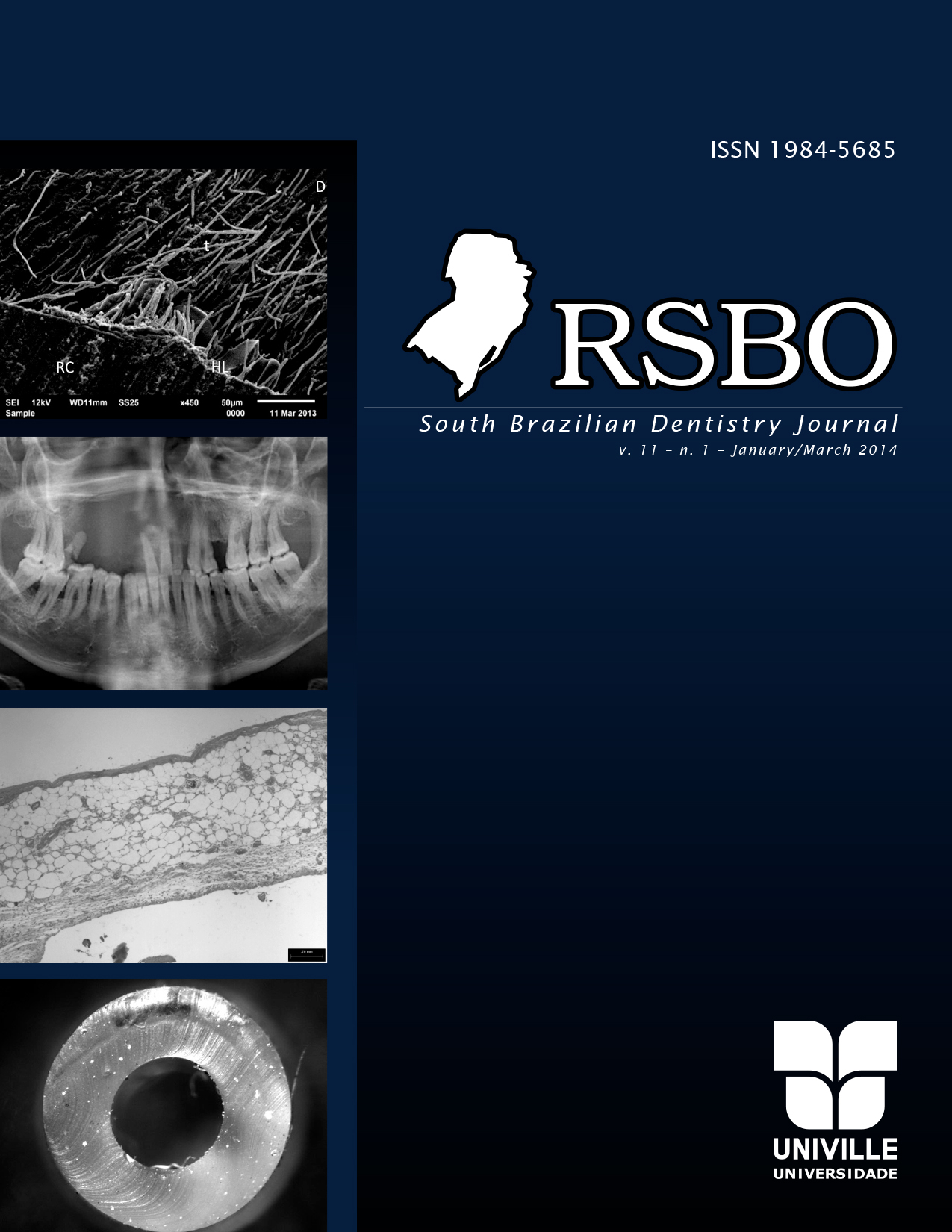Analysis of salivary pH, flow rate, buffering capacity, concentrations of calcium, urea and total proteins in 2-8 years-old children with Down’s syndrome
DOI:
https://doi.org/10.21726/rsbo.v11i1.816Palavras-chave:
Down syndrome; saliva; salivary flow.Resumo
Down syndrome (DS) is a genetic disorder caused by
trisomy of chromosome 21. It is the most common chromosomal
abnormality found in humans. Despite the motor difficulties and
biofilm accumulation, individuals with DS have low caries prevalence.
In this context it is assumed that saliva plays an important role in
maintaining oral health. Objective: To evaluate the following salivary
components: pH, buffering capacity and salivary flow volume in children
with DS aging 2-8 years-old in the city of Curitiba (PR). Material and
methods: Saliva samples were collected from 20 children with DS.
The following parameters were evaluated: buffering capacity, flow rate,
pH, and concentrations of calcium, urea and total proteins. Results:
There was a normal distribution among the variables and the values
observed were not statistically significant (p > 0.05). Conclusion:
The results of this study revealed that there were no statistically
significant differences in salivary flow, pH, buffering capacity, urea,
calcium and total proteins in the subjects studied.

